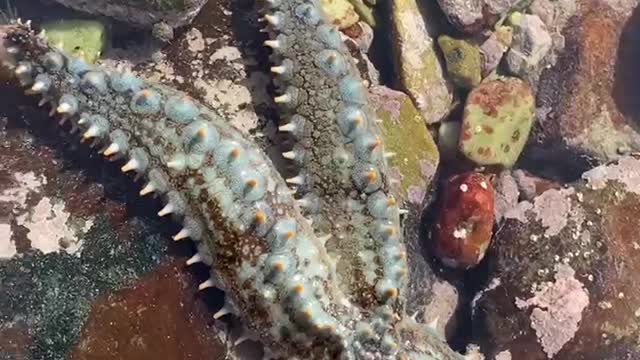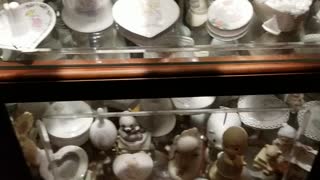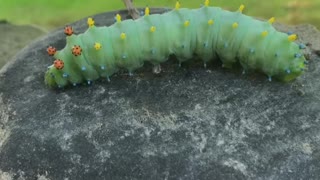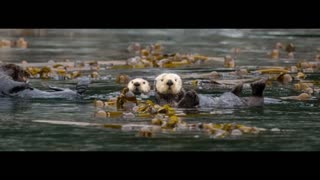Premium Only Content

Our Precious Ocean creatures
The Brittle Star That Sees with Its Body
It turns out that eyes aren’t necessary for vision
You might think a blog about brittle stars is a blog about starfish, but these animals, while similar to starfish, are quite different!
Like starfish, brittle stars are echinoderms but are in the class Ophiuroidea rather than Asteroidea. Brittle stars have five long, skinny arms and a central disk containing a calcium carbonate skeleton and all of their internal organs. As long as the central disc is intact, the brittle star can lose any or all of its arms and grow them back. Their ability to regenerate arms is most useful when predators take hold of their arms as brittle stars can detach their arms to escape. In addition, their arms twist and turn which help them travel along the seafloor. The largest brittle star arms can grow to be 24 inches long and are usually grey or brownish-red in color, but there are other variations depending on the species.
Diet & Habitat
Worldwide, there are more than 2,000 known species of brittle stars that occupy nearly all of the world’s oceans, with as many as 73 in the Arctic alone. Some species live in shallower waters while others can live as deep as 11,000 feet! They usually live on sessile, or immobile, animals on the ocean floor like spiny sponges and coral reefs.
Brittle stars are known as seafloor ecosystem engineers for their role in reshaping sediment on the ocean floor when they twist and coil their arms to move, which affects the distribution of other species.In addition to being ecosystem engineers, brittle stars are important in the food web as they provide nutrition to fish, sea stars, and crab predators. Their own diets include small organisms and detritus which they can either filter feed out of the water column or use their mouths (which have five jaws) on the underside of their disc to actively catch their prey. •
credit: By Jennifer Frazer
-
 1:08
1:08
KristysWorld
4 years ago $0.01 earnedOcean creatures eat beneath the waves
1.81K3 -
 1:18
1:18
WildCreatures
3 years ago $1.36 earnedThis frogfish is one of the most unusual creatures in the ocean
7.2K15 -
 3:15
3:15
Havanajohn
3 years ago $0.11 earnedPrecious Metals
856 -
 0:55
0:55
chuckrusso
3 years agoCorgi is precious
175 -
 0:22
0:22
chacoya
3 years ago $0.01 earnedPrecious moments
48 -
 2:28
2:28
Havanajohn
3 years ago $0.01 earnedPrecious Metals IRA
545 -
 12:00
12:00
PreciousPlasticPh
3 years agoPrecious Plastic Monthly News #49
28 -
 0:23
0:23
AnthonySpence
3 years ago $0.05 earnedAtlantic Ocean 1
87 -
 0:16
0:16
BlackLotusOpium
3 years agoVermont creatures
48 -
 4:14
4:14
frederickjayachandran
4 years ago $0.01 earned002-All Creatures of Our God and King
83